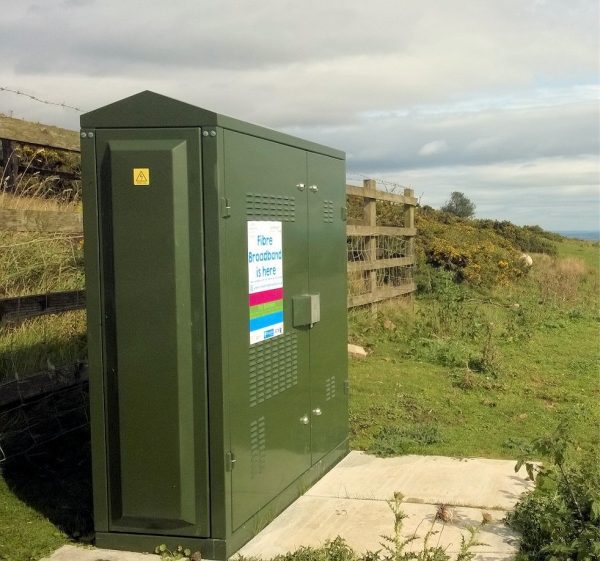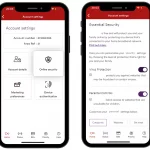Openreach UK Trial Improvement to Broadband ISP DLM Resets

Openreach (BT) has informed UK ISPs with Fibre-to-the-Cabinet (FTTC / VDSL2) and G.fast based broadband lines that they will shortly be running a new trial to test an improvement to the current reset process within the Dynamic Line Management (DLM) system, which could aid copper line stability a bit.
The current DLM system is used to automatically control the speed and stability of copper based broadband lines (ADSL, VDSL2 and G.fast), which in practice means that your speed may go up or down depending upon how stable / error-prone (interference etc.) DLM thinks the line is. New FTTC lines are usually provided with a default speed and error protection settings, which change as DLM learns.
In the past broadband providers have had very little control over DLM profiles for hybrid-fibre lines, although since 2017/18 we have seen a number of changes to improve that and last year a new Amend DLM Profile functionality was introduced, which allowed ISPs to “request a DLM reset on any FTTC service that you own” (here). But now there’s another change coming.
Advertisement
Openreach’s public briefing on the latest change – a “Dynamic Line Management (DLM) Reset Process Improvement Trial” – doesn’t tell us anything, but the operator was kind enough to help us fill in the blanks.
So what’s new?
At present, it’s sometimes useful to reset a line’s DLM profile, such as after a fault has been fixed by an engineer. The reset itself changes both the speed and error protection to default values, which may lead to a short period of suboptimal performance while the line goes through another stabilisation period (a similar period – lasting about a week – usually occurs on new lines too).
However, Openreach and ISPs have collaborated to design a better process, which is what this trial reflects. Under the trial, a DLM profile reset will now return the speed to default values, but leave the error protection largely untouched. The trial, which might help to mitigate the usual period of suboptimal performance, will last a few months and run nationwide.
None of this will change what profile the line settles on after a fault has been fixed, as that will remain subject to the ongoing whims of DLM and the environment, but it should make the transition during that stabilisation period a bit quicker and less noticeable to the customer. At least, that’s the hope.
Advertisement
Mark is a professional technology writer, IT consultant and computer engineer from Dorset (England), he also founded ISPreview in 1999 and enjoys analysing the latest telecoms and broadband developments. Find me on X (Twitter), Mastodon, Facebook, BlueSky, Threads.net and Linkedin.
« Connexin Start Rollout of 10Gbps Broadband Network in Hull UK























































aid copper line stability a bit. You have to be joking right. We live in almost 2022. And they still mess around with old ancient cables. Why can’t they replace old ancient cables with true Fibre cables. I guess nobody cares about internet in this country absolutely. I’m in Bridgwater near Sainsburys. Only one FTTP company exists here Jurassic fibre. I’ve been waiting for almost whole year to be connected. And still nothing. Not even 5G exists here.
Openreach will have pushed FTTP to 25 million premises by December 2026 (currently 6 million), so they are replacing those old ancient cables and at quite a pace. But it’s an inherently slow process to build full fibre for all operators, and in the meantime many people will still need FTTC.
You’re wrong. Openreach fibre is covering quite alot of Bridgwater. Stockmoor, willstock, some of hamp and areas of the NDR can all order. If you’re not happy with the speed Openreach are doing it why don’t you moan at Jurassic to speed up the install time as it sounds like they’ve put a CBT by you?
You always get same people who think they know meter Mark Jackson. Mark you work in IT the rule out of FTTP will take time people will still need FTTC. That’s what I mean about FTTC VDSL2 needs error correction such as Dynamic line management aka DLM because interference on the copper line such Electromagnetic interference EMI and other interference. Like I said I use Powerline Adapters and Powerline use 2 to 86 MHz and FTTC VDSL2 uses 17 MHz watch means signals can overlap watch can cause interference. But you always get people who think smarter then other people even they work in IT.
It will be many years before some people have FTTP, if putting FTTP is not cost affective then it will not happen, unless it is subsidised.
We are having FTTP being laid out, but it will still be a couple of years before it covers the whole city, but it is via a alternative network provider, even so some people will prefer to stay with the provider they are with on FTTC as it they may get a better price.
Openreach have done a very small part of the city, I think it is only a couple of roads with FTTP, for some strange unknown reason.
So anything that will improve FTTC is good, not that I have any complaints, mine is fine, not the highest speed, only 35Mb/s, but still fine
Openreach doing zilch around Temple Ewell, Kearsney, River.
Main town of Dover apparently would be FTTP by 2022-2024 after GFAST was scrapped (and promised).
Still FTTC here in the outlying areas (and cabinets in strange locations in a lot of cases meaning distance from cabinet) or a monopoly of Virgin Media because if you can get VM, you are better off due to strange cabinet locations for FTTC meaning most people would get 24-42mbps at most unless you are lucky to be of the handful nearer the cabinet.
Not even the altnets have come here which is strange because a large area easy to cable, high penetration on cable which they could take away. They go to places where there is already Openreach or other altnets!
all part of the superfarce. protecting copper assets.
@chris condor
Normal comments resumed 🙁
Easy for you to slag off Openreach as your beloved B4RN didn’t have any copper assets to replace in the first place but Openreach are doing a great job at pace rolling out full fibre to millions of customers not just a poultry few.
How does this protect copper assets? It in no way impacts the FTTP build, it may improve service for those on copper.
G.fast was protecting copper, this isn’t.
Comments like these: “Openreach are doing a great job at pace rolling out full fibre ” are a bit misleading. What Openreach is finally doing now, should have happened more than a decade ago. Chris Conder is right, for far too long BT was too much interested in protecting old copper assets.
There are many areas which will now have to rely on alternative fibre networks for users’ needs. And up to this very day BT/Openreach doesn’t even offer symmetric fibre, probably in an attempt to protect its leased lines business.
@GNewton
First and foremost they are a business, BT bashers still act as if they are government owned which hasn’t been the case for 35+ years. If you don’t like what they sell you can always look elsewhere.
I keep hearing people bleating about what should or could have happened 10 or 20 years ago but that is all inmaterial.
No one has the right to full fibre and that is something people keep forgetting.
Altnets have had 35 years to fibre the whole of the UK.
“Altnets have had 35 years to fibre the whole of the UK.”
Which altnet, unlike BT, had an originally nationwide taxpayer-funded access infrastructure network (poles,ducts,exchanges,etc) back then?
Why are BT shares so low, compared to a few years ago?
Why are you so desperate defending wrong infrastructure policies?
Show me on this doll where BT touched you, GNewton.
@GNewton
The way you’re acting I guess not on the Openreach fibre map yet.
This is good news. Before I got full fibre this year, my FTTC line could be highly variable due to line length and quality. Occasionally it needed a DLM reset where it would stabilise for many months at a good rate, then suffer from bad weather and get stuck at a much lower rate forever more. Getting a DLM reset was a nightmare. Requiring an engineer visit and a usually got a copper voice engineer not a broadband trained one, or worse one of the 3rd party ‘turn your router off and on again’ muppets dispatched. This wasted hours and literally all that was needed was a DLM reset (as I say this made a big difference for long periods).
Anything to make this easier is a good thing.
Not everyone wants, can get or can afford full fibre.
It’s pot luck round my way whether you’ll get a proper Openreach person or one of MJ Quinn’s “finest.”
TBF, the last time an OR engineer looked he actually made an effort. Found some joints were suffering water ingress in a duct so made some repairs.
It wasn’t quite back to the heady heights of 50/20 max line capacity (before DLM kicked in to increase robustness over speed) but it was nice that after so many years and callouts that someone investigated properly rather than stick a meter on and go “yeah, well lines are crap round here and you’ve got an intermediate cab in the way. Your line’s 300m so meh. Just be grateful you’re not in X road round the corner (sucks teeth) they’re full alu cables!” This happened several times.
Glad I’m on full fibre now!
I wish the 80/20 cap was lifted. I live in a block of flats, the cabinet is next to the building and my connections is very stable at the max 79999/19999 kbps. I think it could connect at better speed if there was no nationwide cap on FTTP – the profile 17a allows 150/50 MBps.
Its not as simple as releasing the cap. Openreach dont own the spectrum that the faster speeds transmit over so first they’d have to purchase it and test it to prove it doesnt interfere with ither services. All for a benefit that very few would enjoy.
Err Adam the spectrum in use doesn’t change with a lift of the cap. Profile 17a is confined to the same spectrum regardless of speed cap – that’s the point of profiles.
Openreach don’t own any spectrum. They are given permission to use it but do not own it. They can use right up to 106 MHz.
+1 to this. I don’t understand why in all other EU countries the line rate not only is not 79999, but it also takes into account for the overhead of protocols at higher levels. In Italy the line rate of a 17a line is 108000/21600. Not to mention vectoring and 35b (in Germany with supervectoring they offer 250/40 on FTTC)…
Whilst I agree that 35b would have been a better bet than GFAST the, wrong, decision was made to go with GFAST.
It isn’t so simple to just switch on the extra higher frequency because of the way FTTC was implemented.
We are where we are and the FTTP rollout is where the focus needs to be. If pressure is needed it is to force BT to have a road map to symmetric and higher throughputs in 10 years.
That may sound a long time but it isn’t. BT is, like most UK PLC’s run by fundamentally actuarial accountants who don’t really understand mid to long term returns. As a shareholder I like the divvy but I’d prefer to see clearly expressed roadmaps to asset value.
What does concern me is that BT may put in GPON 1G and then sit back and resumes hand wringing ‘ooooohhh it is soooooo expensive blah blah blah’ whilst the alt net opposition munch their lunch yet again.
It is as simple as releasing the cap.
The Profile 17a Bandplan Openreach uses will use the same spectrum regardless of the product cap.
Openreach are not going to increase the 80Mb cap on VDSL2.
The only reason European countries have a higher cap than Openreach is because they have rolled out Vectoring.
Apart from a few select BDUK funded cabinets there is no Vectoring on Openreach VDSL2.
Time and money to replace old infrastructure doesn’t come quick or cheap! I’m a retired BT engineer, former Post Telephones, and I know the struggle to get the new cables in. And BT are not picky on the area’s the supply, the do the Highlands and Islands, at no extra price!
Yeah I have up most respect for the Openreach engineers because there the once that maintain infrastructure during covid pandemic. And yet people that there never happy they don’t have any respect for all key workers and Openreach are classed as key worker keeping up all connected so we can continue working from home.
Same as IT people that kept work systems running and in meltdown in most companies trying to put flexible systems to deal with variety of systems when working from home. Many never exposed to that way of working before as some systems considered on premise. Some systems also had issues over VPN or zScaler that had to be resolved quickly too. Not all systems are cloud Irfan be cloud.
They got no thanks and were not ckassed as key workers.
It’s a shame Mark continues to call FTTC products “hybrid fibre”.
There is nothing remotely fibre-like about VDSL/ADSL/GSlow – they are copper technologies.
If vdsl isnt hybrid fibre then what is?
Relative to ADSL there’s a lot less copper.
They brought fibre cables closer to the premises to shorten the copper, “full fibre” does the same thing by bringing it to the premises before a copper cable jacks it into your hub and then your devices.
Nothing fibre like apart from the fibre to the cabinet? Do you know what the word ‘hybrid’ means?
You guys are amazing – time to revise/learn about VDSL.
Openreach need to go back to school as well, Bill?
https://www.openreach.co.uk/cpportal/products/fibre-broadband/sogea
Hybrid fibre is a description of the physical medium, same as full fibre, HFC, FTTP, FTTC, FTTN, FTTS, etc.
ADSL/VDSL/G.fast/GPON/XGSPON/RFoG/DoCSIS are descriptions of what’s running over that physical medium.
As in the UK all VDSL and G.fast run over access networks that are partially fibre it’s reasonable for a UK site to describe them this way.
The problem is that Openreach are not capable of dealing with complex interference problems to VDSL and minor ‘tinkering’ with DLM resets does not help. After 3+ years of DLM forcing my speed down >75% with >23dB SNR at times, they always respond to a low-speed complaint from the ISP by sending a new and often green engineer out with the only effect that I get a DLM reset. My issue is interference causing >50 ES per hour(almost independent of SNR), usually overnight. Switching off DLM would give me a lot of respite but they refuse……….
This actually could lead to speed improvements. At the moment, if IMP (error correction) is applied to a line, it has to be removed before the sync speed can increase.
On my line, when the error correction is removed, errors increase quite a bit and the sync rate falls after a week or so.
Hopefully, error correction will no longer be a constraint on line sync rates.
The biggest problem is that a lot of lines connect to ECI cabinets, so still can’t benefit from G.INP on the downstream.
Correction, I meant to say interleaving rather than INP.
Some people have short memories.
Back in the day, FTTC was already said to be a rubbish technology. BT were obsessed with digging trenches for Fibre which added to cost of roll out. It took them 15 years to realise that overheads on existing poles works fine and is much cheaper.
They took so long to implement FTTC too, then had issues with ECI cabinets (whereas Huawei just worked).
They wanted to sweat the copper assets to reduce capital expenditure as their arrogant and incorrect view even then, was that nobody needed more than 80mbps! And most people on FTTC get half that amount anyway due to interference and distance. They didn’t even use vectoring to improve line conditions and stalled on that.
So if BT are picking up pace with FTTP, it’s **ONLY** because they now realise they can no longer silence everyone because other operators would simply take their customers away; in short they are being forced to because they can’t stop it now; the rot took hold!!!!!
1. FTTC was always a stopgop to FTTP.
2. If FTTC wasn’t rolled out out, FTTP would take much much longer because with FTTC, the fibre aggregation nodes (also used for FTTP) were brought closer to people’s homes. According to Oponreach around 96% of properties in FTTC areas are within 2km of their nearest agg node.
and another thing, let’s not forget a lot of the delay by BT was also to protect ethernet/leased lines – the same way we STILL see this on FTTP and the fact they don’t do symmetric download/upload or over 900mbps for consumers, despite a number of altnets doing it. They still they they can bleed business dry.
In their position you’d probably do the same on all counts. They exist to provide a return to their investors, not to give you symmetrical broadband or provide >80 Mbps when the empirical evidence said it was a niche product.
Wasn’t that long ago most Virgin Media customers were on 100 or lower. Main reason that changed was their rejigging their bundles.
Average Joe couldn’t care less about symmetrical and isn’t bothered by ultrafast still. Many readers here would disagree but we aren’t close to the majority.
Lol. Most virgin customers on 100. Hmmm they had choice of higher though unlike BT FTTC customers!
No BT got it wrong. They strategically backed the wrong product. And as I said the only reason they are moving now is because they would be obsolete due to competition.
Cloud is pushing faster uploads and has been for some years.
Get on and fix eci g.inp…. there are lines with it still running… give it to the masses..longest ever saga known to man…
They can’t. If they could they would have. Only fix would be to replace all the ECI cabinets with Huawei or Nokia. Not happening given the move to FTTP.
Yes, once again BT useless. Had they done vectoring a lot sooner, they would have started discovering a lot of the ECI problems way before roll out on FTTC was so large. BDUK used Huwawei and ECI cab people would wish they were on that kit as it works.
BT were still rolling out ECI when Huawei was realised to be better kit and they still stuck with ECI even though they still had to procure the kit and not because bulk had been bought.
@anonymous that’s not completely correct. There are lines with it still enabled on eci cabs today. Why should a select few continue to get better speeds on the ds when the rest of us can’t. My line last saw it in 2016!..
To be totally fair to BT you don’t just use one supplier. Otherwise they have you over a barrel. Look at the HAUWEI issues?
BT are having to rip out and replace a lot of HUAWEI stuff because of the security issues around it.
It makes far more sense to spend in deploying FTTP than to spend upgrading FFTC.
Hopefully a lot of people go from ECI FTTC -> FTTP so a decent slug of the problem is then history. FTTP is the real gold standard solution.
I accept it is annoying in the intervening period of time.
ECI telecoms were 1 of the very 1st telecoms companies to release commercial VDSL2 DSLAM’s.
They were initially regarded as 1 of the best companies to buy from.
Openreach do not have a crystal ball and could not have seen the issues with G.INP that were to come.
It wasn’t even deployed when Openreach picked ECI as a VDSL2 Vendor so I’m not sure how ANYONE could have seen the issues that were to come.
In Germany deutsche telekom stuck with ECI and it served them well.
They eventually swapped the ECI M41 (what Openreach use) for the more capable V41 DSLAM.
The ECI M41 doesn’t support upstream G.INP and has considerable issues with downstream G.INP on some specific modem chipsets.
If approval of modems was stricter in the early VDSL2 rollout (MCT testing) then some of these issues could have been avoided.
Not only does the ECI M41 have issues with G.INP it also doesn’t support system level Vectoring. It only supports board level/line card level Vectoring which doesn’t work efficiently with the Openreach topology.
The ECI OLT’s that the FTTC cabinets connect back to also run some FTTP.
The ECI OLTs only have 1Gb uplink ports, meaning 1Gb GEA cablelinks only.
The Huawei OLTs can do 10Gb GEA cablelinks.
This limits ECI FTTP to 330Mb.
There’s good reasons why Openreach pick more than 1 Vendor for a rollout.
They couldn’t predict the issues the ECI hardware would have and didn’t want to do as the Germans did and swap out 20-30k VDSL2 DSLAM’s. Swapping DSLAM’s wouldn’t have helped with the OLT’s either.
They also couldn’t predict Donald Trump and the Huawei issues.
As far as the hardware goes the Huawei kit is excellent.
Politically though Huawei is a hot potato.
As a result of the above it means Openreach run 2 slightly different DLM systems for ECI and Huawei cabinets.
The Huawei cabinets can sync 15Mb higher with 8ms less latency than ECI cabinets on an identical line, entirely down to the DLM.
My PCP has both an ECI and a Huawei cabinet. I had my pair swapped from the ECI to the Huawei.
By the time I left FTTC on Huawei my sync was 44Mb @ 3dB SNRM, G.INP enabled.
On ECI that would have been around 33Mb interleaved, so 8ms added latency to go with the lower sync speed.
“BT are having to rip out and replace a lot of HUAWEI stuff because of the security issues around it.”
BT (EE) are removing some Huawei kit from the mobile network.
BT (Openreach) are not removing ANY Huawei hardware.
The fixed line network was largely excluded from many of the sanctions/limits imposed on Huawei in the UK.
The DSLAM’s and OLT’s are not part of the core. They are treated as dumb equipment on the edge of the network and so less of a security risk.
Huawei are still Openreach’s only VDSL2 Vendor. They stopped deploying ECI DSLAM’s in Q3 2016 but were already favouring Huawei from 2014 onwards.
The (very few) VDSL2 cabinets still being installed are all Huawei and will continue to be Huawei.
There’s a cap placed on Huawei hardware in the Openreach FTTP rollout.
That cap is being met by using Nokia (and eventually Adtran) OLT’s for the FTTP rollout.
It doesn’t require any existing Huawei hardware to be removed or replaced.
It doesn’t work properly Eci sufferer. Just switching it on and hoping for the best isn’t really the way to go.
It has no production mass rollout, it is not part of the normal DLM profiles and new hardware is required to resolve it which isn’t happening.
To get vectoring working requires new chassis and cards.
To get the ECI OLTs running at higher speeds requires power supply upgrades, switching fabric install and new cards.
If we are going to blame anyone then Blame Thatcher for cancelling the fibre optic roll out in the 90s.
Easy to blame Thatcher but BT was the monopoly at the time. Various governments and decades after her though to change things.
Back then it would have been too ahead of its time, as cable companies only got going post circa 2004 with cable broadband despite many areas having fibre installed during the 90’s. It could have ended up a DOCSIS mess too.
No, the real blame is BT backing the wrong technology in belief that it would just do and be minimum cost.
So very true, British Telecom offered to fibre whole of UK for £15 billion before privatisation. Other providers will not cover remote area’s.
@GPOBritishTelecomBT46year: Some posters here, such as ‘The Facts’, seriously believe that altnets had 35 years to fibre the whole of the UK. This illustrates how far they are out of touch with reality here and don’t seem to understand that building an access infrastructure from scratch isn’t comparable to making use of an already nationwide structure (e.g. ducts, poles etc).
Not until there was a better PIA in place was it even reasonably possible for some altnets to re-use at least some ducts and/or poles. Betting on a wrong VDSL technology, only to be replaced by fibre a decade later, probably was more costly than doing it right with fibre in the first place.
@GNewton
Why should anyone get a helping hand from a competitor when starting a business and PIA is exactly that.
You’re still acting as if BT are government owned, you need to forget this misinformation otherwise your comments make no sense.
@ anonymous. I am already aware of the technical issue . My point is purely we pay the same yet huawei cab users have a distinct advantage over eci users.
It’s just not on…..
People on really long lines pay the same as those next door if they subscribe to the same product.
People on lines impacted by noise and crosstalk pay the same as those on impeccable lines.
People with no vectoring pay the same as those with it.
If you’re within the estimated speed range you’re getting what you’re paying for.
Ideally, Openreach would prioritise the areas with ECI cabinets for upgrades to FTTP (above Huawei cabinets).
This is pretty much the opposite of what is actually happening though, because ECI cabinets were deployed in less urban areas with fewer customers.
It’s the sort of thing that could benefit from government subsidy, but I don’t think the government thinks about these problems on a technical level, they are only interested in ticking the 1Gbps box by 2025 (can be any type of connection cable of this), for ~80% of the population.
Quite the opposite.
ECI was predominantly deployed in the early FTTC rollout.
The vast majority of the early commercial rollout was ECI.
They were mainly deployed in dense urban areas.
Huawei cabinets were the chosen BDUK vendor and the only vendor deployed since Q3 2016 so they can be found in more rural areas.
There are many many more Huawei cabinets than the are ECI cabinets.
Without a doubt though most ECI cabinets are urban and most rural cabinets are Huawei.
I just Like to give all you guys out there a bit good advice regarding Powerline Adapters. After a few years struggling with powerline speed I can confirm I am no longer using cat6 cable I am using cat7 STP. You can use cat6a. I am also using STP cable RJ11. The speed on my PLC utility app says I am up 400 mbps to over 700 mbps.